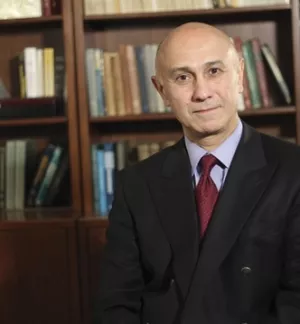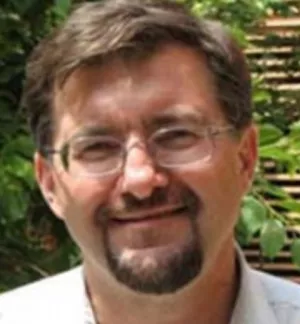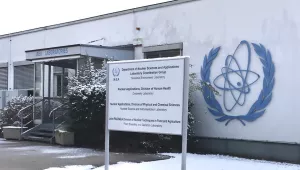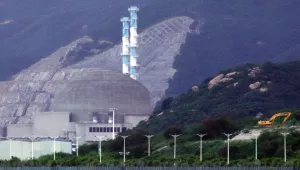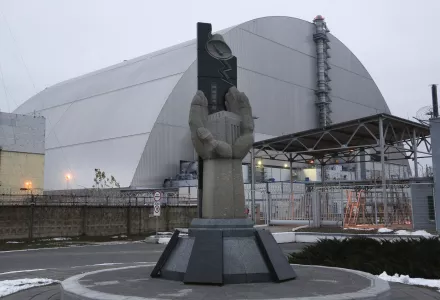
The world will soberly commemorate the 33rd anniversary of the Chernobyl nuclear power plant catastrophic accident on Friday, April 26, 2019. Some may wonder why bother with a gone-by historical event that happened in a distant land — a country that no longer exists — the former Soviet Union (now Ukraine). On the contrary, Chernobyl and its legacy, with its specters of lingering human toll, radiation contamination, and the massive new shelter (“New Safe Confinement”) installed over the old sarcophagus encasing the reactor, will be with us for a long time.
Chernobyl was neither the first nor the last serious nuclear reactor accident; it was sandwiched between Three Mile Island (1979 in the United States) and Fukushima (2011 in Japan). While some nuclear power industry experts argue that past nuclear accidents shouldn’t detract from the industry’s future credibility, there is no doubt that a new Chernobyl-type disaster is more likely to happen if we do not learn the key lessons of the one that has already occurred.
Presently, there are about 450 operating nuclear power reactors in the world; 55 new reactors are under construction in several countries including China, India, Pakistan, and newcomers Bangladesh, Belarus, Turkey, and the United Arab Emirates. In light of the threat of climate change and the increasing need for carbon-free baseload electricity generation, there is no question that nuclear power should play a viable role in the energy mix in the future. But can anybody imagine experiencing another Chernobyl or Fukushima with their punishing aftermaths, including exclusion zones? Although some people believe the solution is to get rid of nuclear power, doing so may not be feasible in the foreseeable future. While waiting for alternative sources of energy to fully replace nuclear, we should learn lessons from these accidents and double down on our effort with nuclear safety. We don’t have any choice.
The Chernobyl accident was attributed initially to workers who shut off key emergency equipment during a test and then ignored warnings that the reactor was out of control. The accident in Japan followed a powerful earthquake and tsunami that swept over the northern part of the country.
But both disasters were preventable. Flaws and failures in the safety culture of nuclear power operation and oversight in Japan and the Soviet Union caused these accidents. One of us (Meshkati) has conducted research on nuclear safety and visited both of these stricken plants. We both believe the nuclear power industry, with its insular mindset and past misconduct, has been its own worst enemy and earned the public’s mistrust.
It is foremost the nuclear power industry that must change.
When the earthquake and tsunami struck the Fukushima Daiichi and Daini Nuclear power plants, which were owned by Tokyo Electric Power Co on March 11, 2011, 60 kilometers closer than Fukushima Daiichi to the epicenter, there was the Onagawa Nuclear Power Station which was owned and operated by the Tohoku Electric Power Company. Onagawa was also hit by the earthquake and faced even a bigger tsunami, reaching a height of 14.3 meters, compared with 13.1 meters at Fukushima Daiichi. However, Onagawa’s three operating reactors, which were the same type (BWR) and vintage as the Fukushima ones and also were under the same regulatory oversight (METI-NISA), shutdown safely and were remarkably undamaged. According to our studies, we have concluded that Onagawa’s drastically different fate than Fukushima Daiichi and Daini can primarily be attributed to the deep-seated, proactive safety culture of its owner, the Tohoku utility.
Safety culture is analogous to the human body’s immune system that protects it against pathogens and fends off diseases. A healthy safety culture based on trust, transparency, and accountability is the key to the safe operation of nuclear reactors in any country; it should also be the basis of relations and interactions among reactor suppliers, operators, and regulators. Hubris, greed, secrecy, complicity, and confusion are major woes of any safety-critical technological system and breeders of public mistrust.
While world attention is focused on the nonproliferation of nuclear arms, an equally great danger looms from the mismanagement of nuclear energy around the world. The story of Chernobyl points to the need to strengthen international control over the construction and exploitation of nuclear power stations as well as to develop new nuclear technologies.
What we need now are tough, system-oriented nuclear safety standards, strong safety culture and much closer cooperation between countries and their independent regulators. The United Nations should also urge its member states to forge a balance between national sovereignty and international responsibility vis-à-vis operating a nuclear power reactor in their territories. Radiation fallout doesn’t discriminate, care, or stop at national boundaries.
The most crucial lesson is the importance of counteracting the dangers posed by nuclear nationalism and isolationism. Ensuring close international cooperation between countries developing nuclear projects is essential. This lesson is especially important today, when the forces of populism, nationalism, and anti-globalism are finding more adherents in the world that relies increasingly on nuclear technology for the production of energy. The world has already been overwhelmed by one Chernobyl and one exclusion zone. It cannot afford any more.
The onus is increasingly on the nuclear power industry; it must learn from what happened in and around Chernobyl on April 26, 1986 and follow the eternal advice of Admiral Hyman G. Rickover (the founding father of the U.S. nuclear submarine fleet who also oversaw the creation of the world’s first commercial power reactor) to President Jimmy Carter after the TMI accident:
“If commercial nuclear power plants are to be operated safely, the organizations that own and operate the plants — the utilities — must know what they are doing and commit themselves to take the steps necessary to achieve nuclear safety. If the utilities do not establish stringent standards, institute rigorous training programs, and police themselves, there is little hope for assured safe operation of commercial nuclear power.”
Najmedin Meshkati is a Research Fellow with the Project on Managing the Atom at Harvard Kennedy School’s Belfer Center for Science and International Affairs and a Professor of engineering at the University of Southern California (USC).
Serhii Plokhy is the Mykhailo Hrushevsky Professor of Ukrainian History and director of the Ukrainian Research Institute at Harvard University and the author of “Chernobyl: The History of a Nuclear Catastrophe” (Basic Books, 2018).
Statements and views expressed in this commentary are solely those of the authors and do not imply endorsement by Harvard University, the Harvard Kennedy School, or the Belfer Center for Science and International Affairs.
Meshkati, Najmedin and Serhii Plokhy."Thirty-three Years Since the Catastrophe at Chernobyl: A Universal Lesson for the Global Nuclear Power Industry." Belfer Center for Science and International Affairs, Harvard Kennedy School, April 25, 2019.



